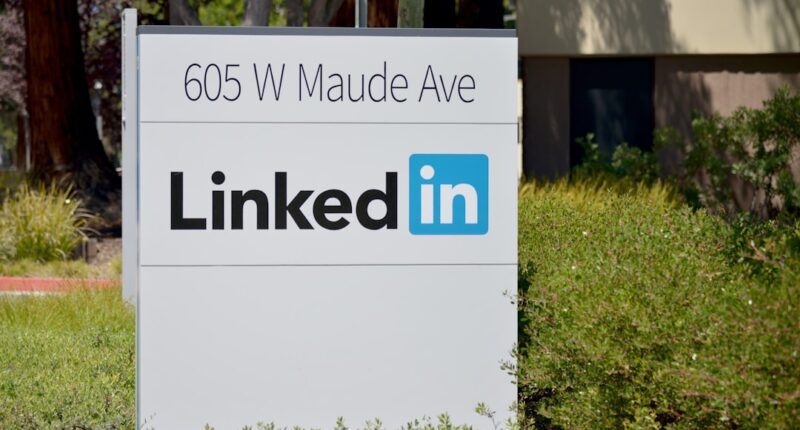Influencer marketing has developed into a potent tool for brands in the current digital era to reach their target audience and advertise their goods and services. Influencers have become increasingly popular as a result of the growth of social media platforms and are now a crucial component of many marketing campaigns. But as the sector develops, a brand-new category of influencers has surfaced: the micro influencer. This article will discuss the idea of micro influencers, how effective they are at reaching specialized audiences, and the advantages of collaborating with them.
Key Takeaways
- Micro influencers are individuals with a smaller but highly engaged social media following.
- Micro influencers have the power to drive high levels of engagement and conversions for brands.
- Micro influencers differ from macro influencers in terms of audience size, niche focus, and authenticity.
- Working with micro influencers can provide benefits such as cost-effectiveness, niche targeting, and increased authenticity.
- Utilizing user-generated content (UGC) is a key strategy for successful micro influencer campaigns.
People with a smaller but extremely active social media following are known as micro influencers. Micro influencers usually have 1,000–100,000 followers, whereas macro influencers have millions of followers. They frequently have built a devoted and active community around their content and are experts or enthusiasts in a particular niche. Micro-influencers operate in a variety of sectors, including travel, fitness, and beauty & fashion.
To reach a particular audience that is enthusiastic about certain subjects, micro influencers in the fashion industry, for instance, might concentrate on plus-size or sustainable fashion. Micro influencers in the fitness sector who focus on yoga or weightlifting draw followers who share their interest in those particular forms of exercise. Micro influencers can reach specialized audiences, which is one of the main benefits of collaborating with them. Although macro influencers might have a wider following, their audience might not be as focused or involved.
In contrast, micro influencers enjoy a closer relationship with their followers & are regarded as reliable resources for advice and information. When compared to macro influencers, micro influencers frequently have higher engagement rates. There’s a higher chance of interaction, comments, and post sharing among their followers. Brands may see an increase in conversion rates and brand awareness as a result of this high degree of engagement. The benefits of collaborating with these influencers have been shown by a number of fruitful micro-influencer campaigns.
| Metrics | Definition |
|---|---|
| Followers | Micro influencers typically have between 1,000 and 100,000 followers on social media platforms. |
| Engagement Rate | Micro influencers have a higher engagement rate than macro influencers, as their followers are more likely to interact with their content. |
| Niche Audience | Micro influencers have a specific niche audience, which allows them to have a more targeted and engaged following. |
| Authenticity | Micro influencers are seen as more authentic and trustworthy, as they are often seen as regular people who are passionate about a particular topic or industry. |
| Cost | Working with micro influencers is often more cost-effective than working with macro influencers or celebrities. |
A microinfluencer who was an expert in natural skincare, for instance, teamed up with a skincare brand. The brand’s products were featured in content the influencer produced, and she also shared her own experiences using them. Sales of the skincare brand increased significantly as a result of the campaign. There are various ways in which micro influencers and macro influencers are different.
First off, compared to macro influencers, micro influencers have a smaller audience. Although this might appear to be a drawback, it really enables micro influencers to interact with their followers in a more genuine and intimate way. They can interact with their followers more deeply thanks to their smaller audience, answering questions and fostering a feeling of community. Also, when compared to macro influencers, micro influencers typically have higher rates of engagement.
This is a result of their fans having genuine interest in and faith in what they have to say. Conversely, because of the sheer size of their audience, macro influencers might have a bigger following but lower engagement levels. Last but not least, compared to macro influencers, micro influencers are frequently regarded as more genuine and accessible. People perceive them as regular individuals who have amassed a fan base by virtue of their knowledge or enthusiasm for a particular field.
Their genuineness strikes a chord with their audience, increasing the likelihood that they will follow their advice. Engaging micro influencers in brand campaigns has various advantages. First off, collaborating with micro influencers is frequently less expensive than doing so with macro influencers.
Micro influencers could have lower rates or be open to working together in exchange for free goods or services. They are therefore a fantastic choice for businesses with tight marketing budgets. Second, brands may see higher conversion rates as a result of micro influencers’ higher engagement rates.
Because they are trusted when making recommendations, their followers are more likely to act on the advice they provide. Increased website traffic, brand recognition, and eventually sales can come from this. A number of brands have used micro influencers to great effect in achieving their marketing objectives. A food delivery service, for instance, collaborated with micro influencers who were experts in meal preparation and healthy eating. In addition to sharing their own experiences using the service, the influencers produced content that highlighted the brand’s meals. The food delivery service experienced a notable surge in new clientele as a consequence of the campaign.
Micro influencer campaigns heavily rely on user-generated content (UGC). Content created by micro influencers’ followers, such as product or service reviews, testimonials, & images, is referred to as user-generated content (UGC). Because user-generated content (UGC) is produced by actual customers who have had a good experience with the brand, it gives the campaign more authenticity and social proof. In order to stimulate user-generated content (UGC) from micro influencers and their audience, brands may offer rewards like freebies, special discounts, or first access to new offerings.
Moreover, companies can designate hashtags specifically for their brand and urge microinfluencers to utilize them in their material. Brands can now track and gather UGC more easily thanks to this. Creating an email list is a useful tactic for gathering user-generated content from micro-influencers and their fans. Brands can request user-generated content (UGC) submissions from their audience directly by gathering email addresses.
Companies can encourage micro influencers and their followers to submit UGC by offering exclusive content or discounts in return for email addresses. Email addresses of micro influencers and their followers can be obtained through a variety of techniques. On their websites, brands can designate landing pages or pop-ups where followers of micro influencers can enter their email addresses.
Email capture forms can also be incorporated by brands into the descriptions of their posts on social media or into their profiles. Brands can also work with micro influencers to organize giveaways or competitions that require email addresses from participants in order to enter. It’s critical for brands to properly arrange & manage user-generated content (UGC) after obtaining it from micro influencers and their followers. Brands can quickly access & reuse user-generated content (UGC) for upcoming campaigns by building an UGC database. Creating an UGC Database can be aided by a number of platforms and tools. Hootsuite & Sprout Social are examples of social media management tools that let brands track & gather user-generated content from various social media networks.
Store & arrange user-generated content (UGC) using content management systems such as WordPress or HubSpot. In addition, brands have the option to generate unique hashtags or manage user-generated content (UGC) through platforms such as TINT or Olapic. To track return on investment (ROI) and make data-driven decisions for future campaigns, micro influencer campaigns must be measured. The effectiveness of micro influencer campaigns can be evaluated using a variety of metrics.
A piece of content’s level of interest and interaction can be determined by engagement metrics like likes, comments, and shares. The efficiency of bringing customers to the brand’s website can be gauged by website traffic and click-through rates. The campaign’s financial impact on the brand can be measured directly by looking at conversion metrics like sales or sign-ups. Brands can monitor these metrics by using third-party tools like Google Analytics or the analytics tools offered by social media platforms.
Brands can gain insight into the campaign’s successful elements and make necessary improvements for subsequent efforts by evaluating the data. In summary, micro influencers are now a significant force in the influencer marketing sector. Brands aiming to establish a connection with their target audience find them appealing due to their authenticity, high engagement rates, and capacity to reach specific audiences. Micro influencers will probably continue to gain prominence and significance in the marketing sector as long as the sector develops.
Brands can create effective marketing campaigns by harnessing the power of micro influencers and using user-generated content.
If you’re curious about what makes a micro influencer and how they can impact your brand, look no further than this insightful article on UGC.email. This article dives deep into the world of micro influencers, exploring their unique characteristics and the benefits they bring to businesses. Discover how these influential individuals with smaller but highly engaged audiences can help you reach your target market effectively. To gain a comprehensive understanding of the power of micro influencers, check out this must-read article on UGC.email: https://ugc.email/hello-world/.
FAQs
What is a micro influencer?
A micro influencer is an individual who has a small but highly engaged social media following, typically between 1,000 and 100,000 followers.
What makes someone a micro influencer?
Several factors contribute to someone being considered a micro influencer, including their niche expertise, high engagement rates, and authentic content.
What is the difference between a micro influencer and a macro influencer?
A macro influencer typically has a larger following, often over 100,000 followers, and may have a broader appeal. Micro influencers, on the other hand, have a smaller but more targeted audience.
Why are micro influencers becoming more popular?
Micro influencers are becoming more popular because they offer a more authentic and relatable approach to influencer marketing. They also tend to have higher engagement rates and are often more affordable for brands to work with.
What types of brands are best suited for working with micro influencers?
Brands that are looking to target a specific niche audience or promote a niche product are best suited for working with micro influencers. They are also a good fit for brands with smaller budgets who are looking for more affordable influencer marketing options.
How can brands find and connect with micro influencers?
Brands can find and connect with micro influencers by using social media platforms, influencer marketing platforms, or by reaching out directly to influencers via email or social media. It’s important to research and vet potential influencers before partnering with them.





